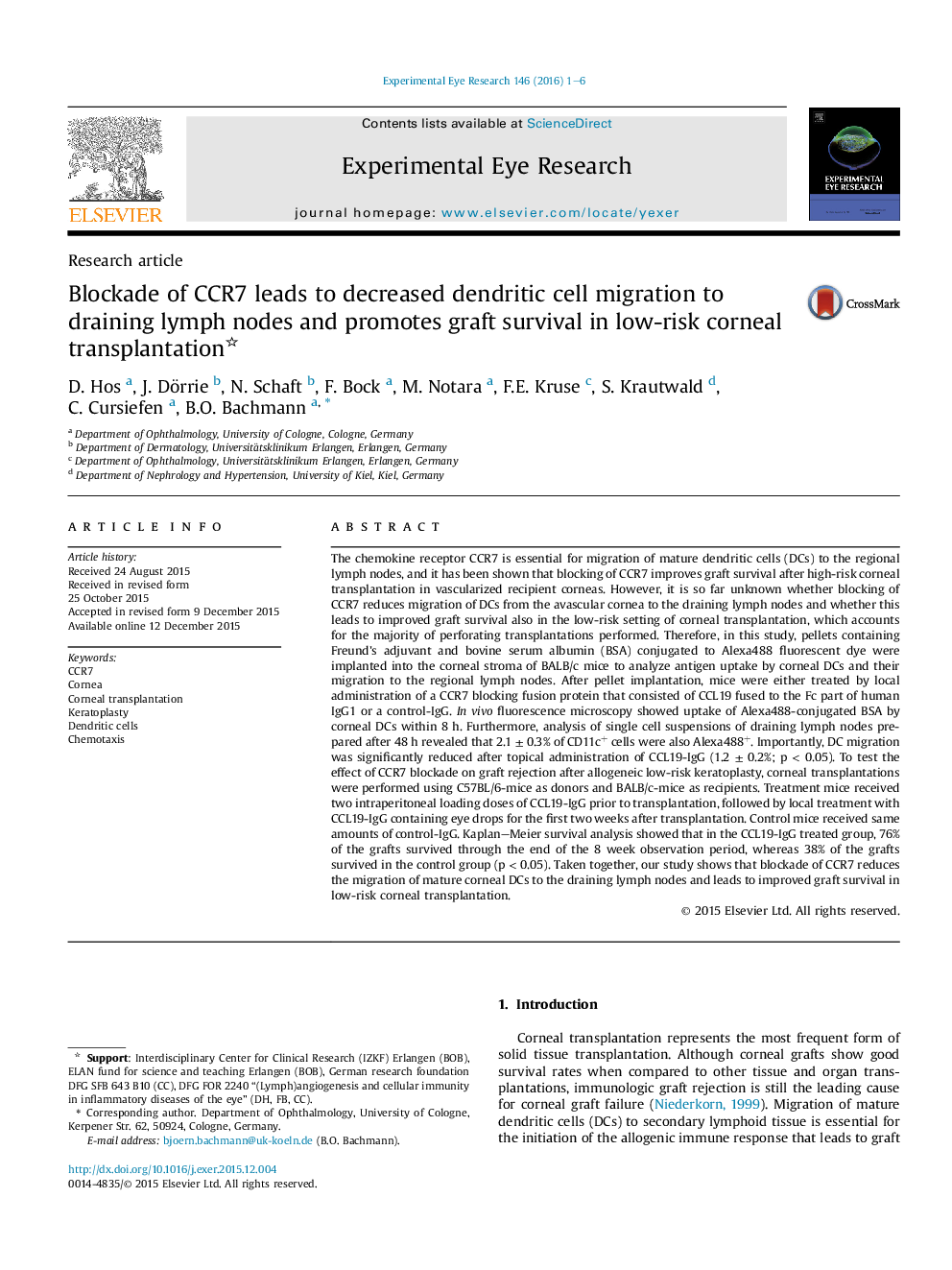| کد مقاله | کد نشریه | سال انتشار | مقاله انگلیسی | نسخه تمام متن |
|---|---|---|---|---|
| 6196263 | 1602576 | 2016 | 6 صفحه PDF | دانلود رایگان |

- Corneal dendritic cell (DC) migration is tracked using fluorescence-labeled pellets.
- CCR7 blockade impairs DC migration from avascular corneas to draining lymph nodes.
- CCR7 blockade promotes graft survival in low-risk murine corneal transplantation.
The chemokine receptor CCR7 is essential for migration of mature dendritic cells (DCs) to the regional lymph nodes, and it has been shown that blocking of CCR7 improves graft survival after high-risk corneal transplantation in vascularized recipient corneas. However, it is so far unknown whether blocking of CCR7 reduces migration of DCs from the avascular cornea to the draining lymph nodes and whether this leads to improved graft survival also in the low-risk setting of corneal transplantation, which accounts for the majority of perforating transplantations performed. Therefore, in this study, pellets containing Freund's adjuvant and bovine serum albumin (BSA) conjugated to Alexa488 fluorescent dye were implanted into the corneal stroma of BALB/c mice to analyze antigen uptake by corneal DCs and their migration to the regional lymph nodes. After pellet implantation, mice were either treated by local administration of a CCR7 blocking fusion protein that consisted of CCL19 fused to the Fc part of human IgG1 or a control-IgG. In vivo fluorescence microscopy showed uptake of Alexa488-conjugated BSA by corneal DCs within 8 h. Furthermore, analysis of single cell suspensions of draining lymph nodes prepared after 48 h revealed that 2.1 ± 0.3% of CD11c+ cells were also Alexa488+. Importantly, DC migration was significantly reduced after topical administration of CCL19-IgG (1.2 ± 0.2%; p < 0.05). To test the effect of CCR7 blockade on graft rejection after allogeneic low-risk keratoplasty, corneal transplantations were performed using C57BL/6-mice as donors and BALB/c-mice as recipients. Treatment mice received two intraperitoneal loading doses of CCL19-IgG prior to transplantation, followed by local treatment with CCL19-IgG containing eye drops for the first two weeks after transplantation. Control mice received same amounts of control-IgG. Kaplan-Meier survival analysis showed that in the CCL19-IgG treated group, 76% of the grafts survived through the end of the 8 week observation period, whereas 38% of the grafts survived in the control group (p < 0.05). Taken together, our study shows that blockade of CCR7 reduces the migration of mature corneal DCs to the draining lymph nodes and leads to improved graft survival in low-risk corneal transplantation.
Journal: Experimental Eye Research - Volume 146, May 2016, Pages 1-6